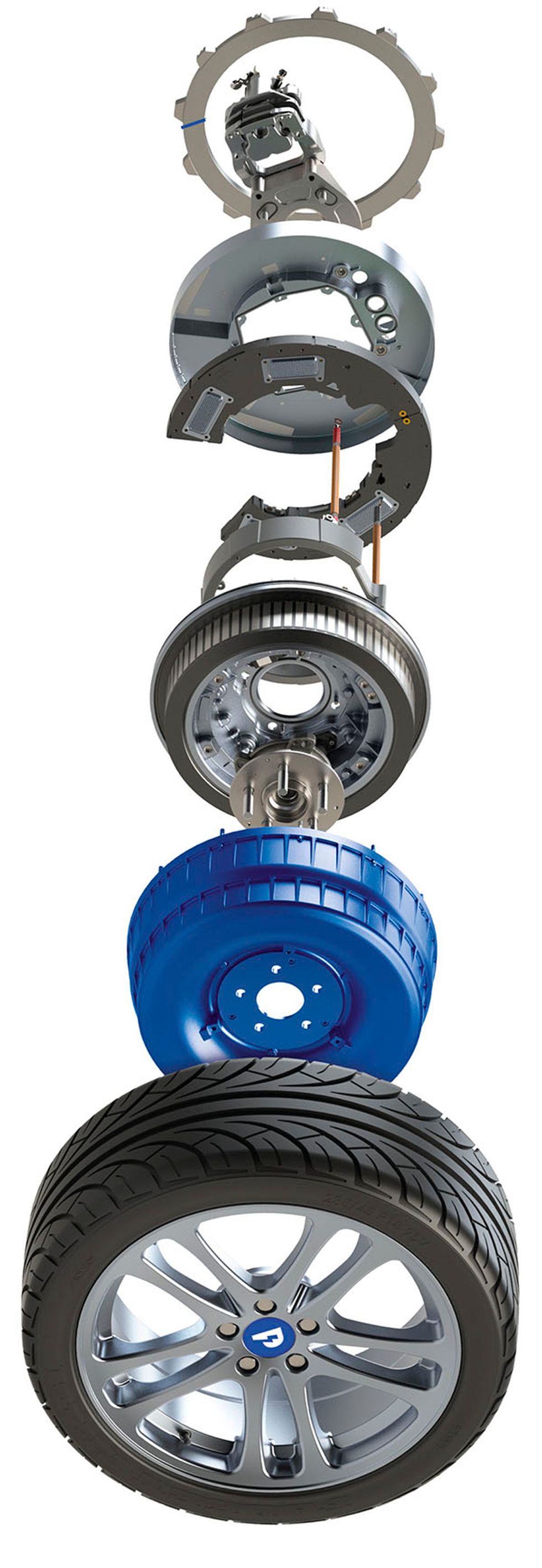Protean Electric’s In-Wheel Motors Could Make EVs More Efficient
Putting electric motors closer to the road may also improve handling
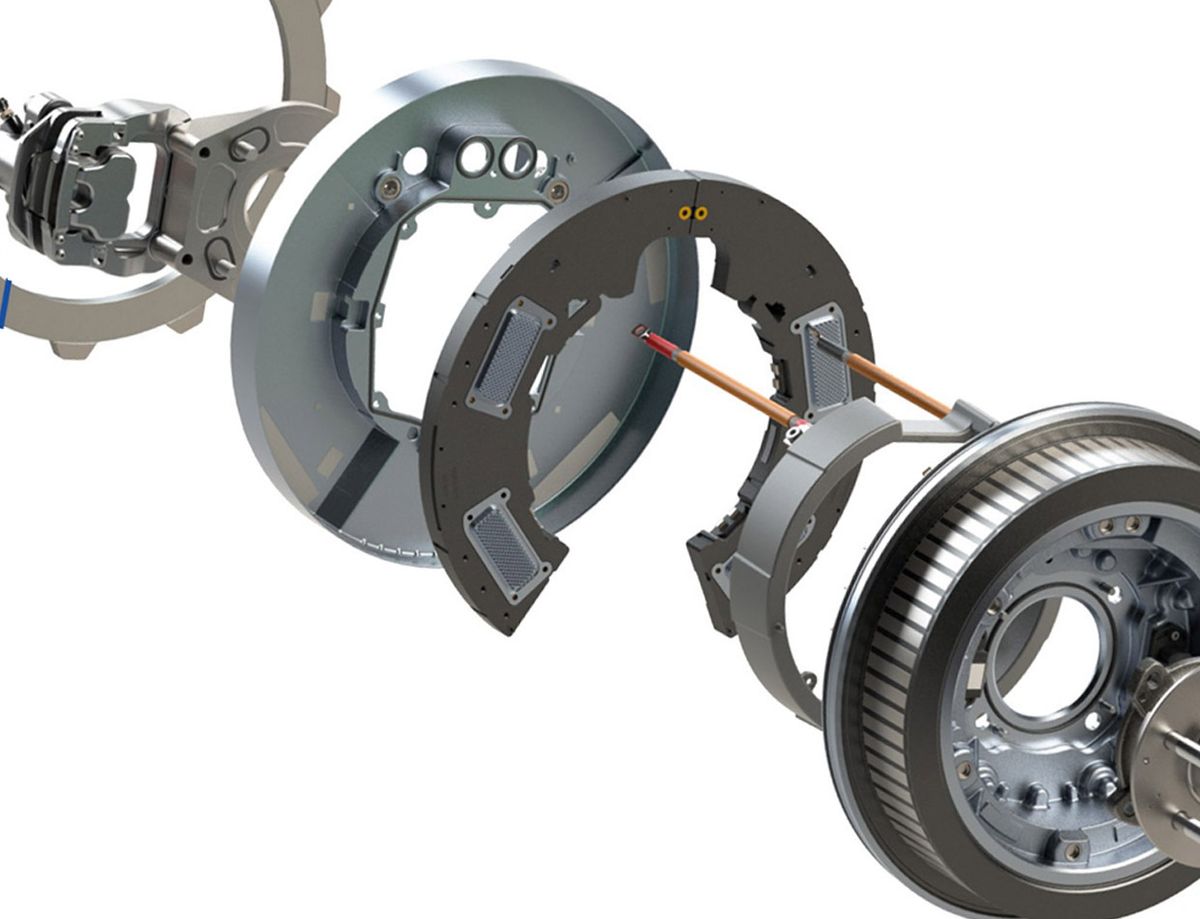
At the end of the 19th century, Ferdinand Porsche in Vienna and Joseph Ledwinka and Fred Newman in Chicago attached an electric motor to each wheel of their horseless carriages to provide power simply, efficiently, and controllably. These automotive pioneers hardly expected that electric propulsion would soon wither and that ever more complex hardware would be developed to transform the output from a centrally mounted internal combustion engine into torque at the wheels. But that’s what happened.
A century later, though, the desire to reduce greenhouse gas emissions, to be less reliant on fossil fuels, and to clean up the air in our towns and cities has revived interest in vehicle electrification. That interest is particularly strong in China, where the government has declared that some 5 million electric vehicles should be on the road by 2020. That’s going to be tough, because many of the country’s more than 100 automakers lack the engineering expertise to develop sophisticated electric-vehicle drive systems. Happily, our company, Protean Electric, can serve that market well—with an in-wheel motor that puts the power just where you need it: in the wheels. Doing so simplifies the mechanics, provides more room for passengers and cargo, and improves handling to boot.
With support from investors and partner companies around the world, Protean is building manufacturing facilities in China. Our first factory, located in Tianjin, is currently producing in-wheel motors in low volumes, and we are working with many Chinese automakers to incorporate our technology into their electric and plug-in hybrid vehicles. If all goes as planned, we will see vehicles with our motors on them for sale any minute now. So let us explain in more detail how those motors work and why we think they represent the future of automobile electrification.
Attaching motors directly to the wheels would seem the obvious way to go, if only for the mechanical simplicity this strategy provides. Yet none of the big manufacturers is doing this with hybrid or battery-electric vehicles. Why not?
For some manufacturers, the reluctance to adopt in-wheel motors stems from concerns about what is known as unsprung mass. This phrase refers to the mass of everything between a car’s suspension system and the road. In a conventional vehicle, this includes brakes, bearings, wheels, constant-velocity joints (the devices on the ends of the drive axles that let them transmit power at an angle), and tires. It doesn’t include the rest of the drivetrain, namely the engine or motor and the transmission, which are housed on the vehicle’s chassis, typically under the hood.
Keeping unsprung mass to a minimum is a good thing. Reducing it improves ride quality for the driver and passengers and makes it easier for the suspension to keep the tires in contact with the road.
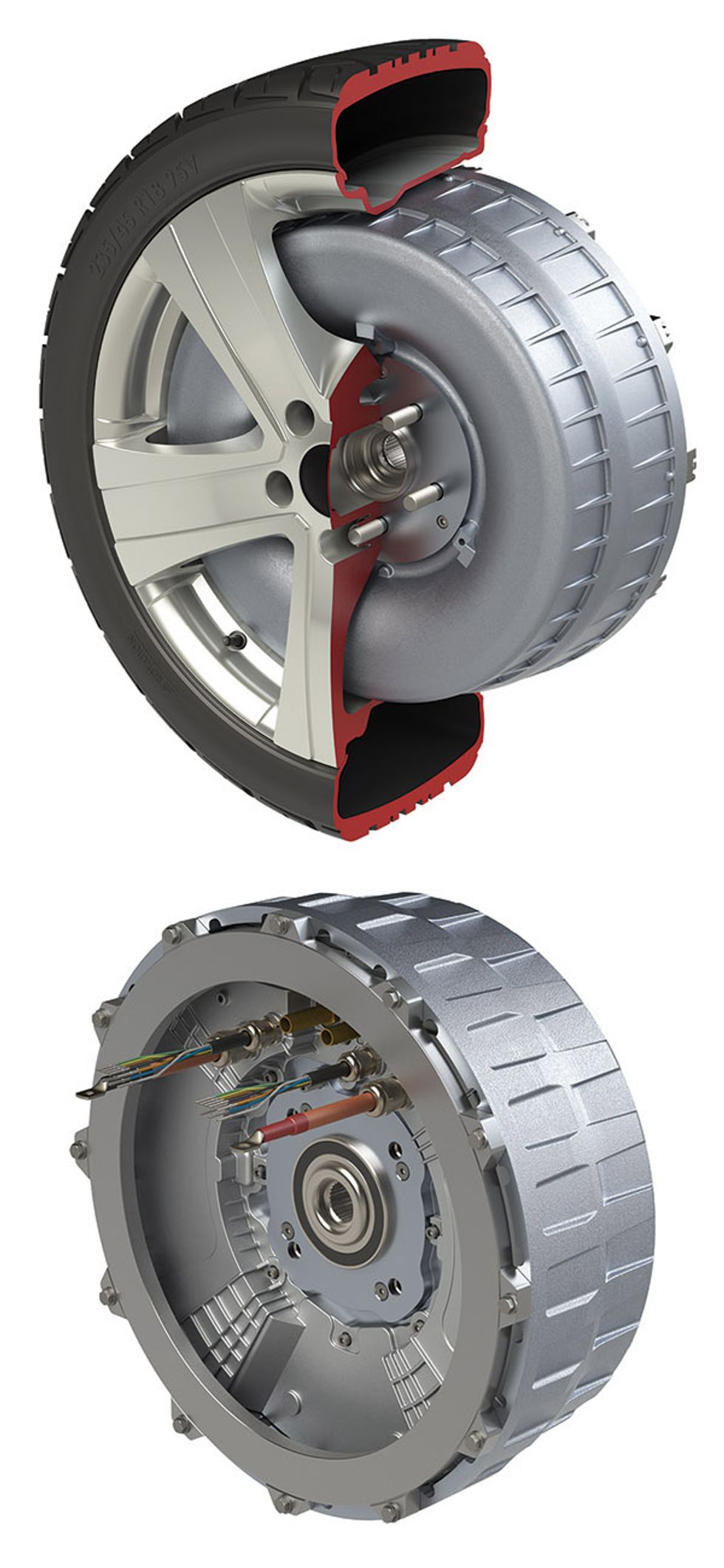
A vehicle powered by in-wheel electric motors will have significantly greater unsprung mass, of course, because the weight of a motor will be carried in each powered wheel. So, many automobile designers consider in-wheel motors to be inherently problematic. But are those concerns really justified?
Very early on, we went to Lotus Engineering, in England, a recognized expert in ride and handling, and asked its engineers to investigate objectively the effects of unsprung mass on vehicle handling. For our company, this would be a make-or-break test.
Lotus added a mass of up to 30 kilograms to each of the four wheels of a Ford Focus and instrumented the car to measure vibration and movement. The company supported its work with computer simulations to gain a deeper understanding of the effects of adding both static and rotating mass to the wheels. Further, trained drivers performed standardized assessments to provide additional information about how the added mass affected ride and handling.
Lotus found the effect of the increased unsprung mass, though noticeable to a trained driver, was really not all that significant. The added mass made the car feel as though its suspension and steering hadn’t yet undergone the usual tuning activities that are a standard part of vehicle development.
The Lotus engineers were able to eliminate much of the effect of the added unsprung mass by using slightly more suspension damping. What’s more, they found that when that unsprung mass came from actual motors attached to the wheels, the ability to power each side of the car independently improved the car’s handling substantially.
We’ve now carried out similar studies on other vehicles. And in all cases, we’ve found that once the dampers are retuned and we add individual wheel control, the net effect on the vehicle’s handling is for the better. So unsprung mass really isn’t a showstopper after all.
Another concern about using in-wheel motors has been the added complexity of the software for the motor controller. This software has to make decisions about what torque to demand from each motor at each instant, based on the vehicle’s condition and the driver’s commands. Under normal circumstances, running two motors instead of just one is straightforward. But if a fault occurs in one motor, the controller needs to prevent a dangerous asymmetry from developing, which would cause the vehicle to be pulled to one side in an uncontrollable way.
Our response to this very important safety issue was to build into our motors two completely independent systems that can detect a fault and equalize torque across two or more motors. Vehicles must meet ISO 26262, a safety standard that calls for proving that a hazardous technical failure will be extraordinarily unlikely. It’s an extremely difficult standard to satisfy, but we are confident that our motors will support carmakers in complying with these requirements.
What about cost? No matter how whiz-bang the technology, if it’s too expensive customers will shy away. We have compared the cost of a typical electric drivetrain, one with a gearbox, motor, differential, and driveshaft, with the cost of two in-wheel motors. Although two motors are somewhat more expensive than one central motor and drivetrain, the in-wheel system is more efficient because it has a lower mass and doesn’t suffer from frictional losses in the transmission. That means that in many cases the carmaker can deliver a vehicle that goes faster or farther (or both) while costing no more than competing models.
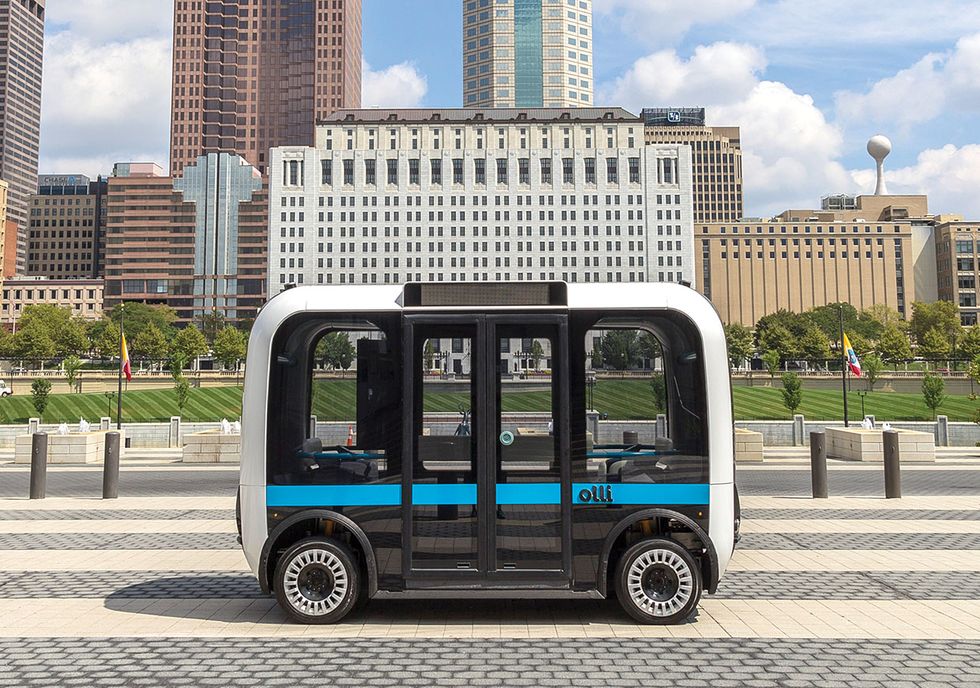
Yet another concern that has been voiced about in-wheel motors is their supposed lack of durability. Placing the motors in the wheels, as opposed to under the hood, means they will get battered when the car travels over rough roads. They’ll also be pelted by water, sand, gravel, and all the other detritus we drive over on a regular basis. Yes, these conditions could pose a problem, but we’ve shown through extensive real-world testing that it’s perfectly possible to engineer a product that can hold up to the beating.
Such worries have in the past blinded most automakers to the advantages of in-wheel motors. A few have explored them in concept vehicles, and a handful of companies are now trying to bring in-wheel motors, which have long been popular for bicycles and scooters, to the automotive market. Protean Electric leads that pack, having done the engineering necessary to make our in-wheel motors a really attractive way to power an electric vehicle.
Our new in-wheel motor system, which we call ProteanDrive, is a complete drivetrain in the wheel. But maybe drivetrain isn’t the best word to describe it: There are no gears or transmission. Instead, the rotor of the electric motor connects directly to the hub, delivering torque from the motor to the wheel. This results in maximum efficiency and compactness.
While we’ve designed motors of different sizes for different applications, our flagship product is the Pd18, so named because it is designed to fit in an 18-inch-diameter (about 46-centimeter) wheel rim. The Pd18, which weighs 36 kilograms (79 pounds), can deliver 1,250 newton meters (922 foot-pounds) of torque and 75 kilowatts of power at the wheel. That means two of them could offer up to 2,500 Nm of torque and 150 kW of power.
That might seem an inordinately large amount of oomph, considering that a typical internal-combustion car engine can produce only a few hundred newton meters. But you have to remember that in a conventional car the engine torque is multiplied by whatever the gear ratio is between the engine and the wheels. In first gear, that might be a number like 10; in higher gears the multiplier would be lower. So a pair of Pd18s can match the typical level of wheel torque a conventional car can provide.
At the core of our ProteanDrive is a permanent-magnet synchronous motor and a set of tightly integrated electronics. The electronics send precisely controlled currents into the windings of the electromagnets of the motor, creating magnetic fields that interact with the rare-earth permanent magnets affixed to the rotor. By this mechanism, each in-wheel motor can deliver the amount of torque demanded of it in as little as a millisecond.
The electronic circuitry is designed to fit within the overall motor package and shares cooling with the motor, whose windings have up to 90 amperes flowing through them and thus generate a lot of waste heat. That heat, along with the heat from the electronics, is carried off by water flowing through a coolant channel in the motor housing. The coolant is in good thermal contact with both the electronic components and the motor windings. Those windings are encapsulated in a protective epoxy resin, which helps to conduct heat away. That close integration of the motor and drive electronics enables a very small motor to generate a great deal of power.
The software, running on a microprocessor supported by a field-programmable gate array, makes 16,000 decisions per second on what voltages should be applied to the windings, based on measurements from sensors that deliver information on the electrical and thermal condition of the motor as well as its position and speed. The software ensures that the electrical currents flowing through the motor are exactly right for smooth, quiet operation.
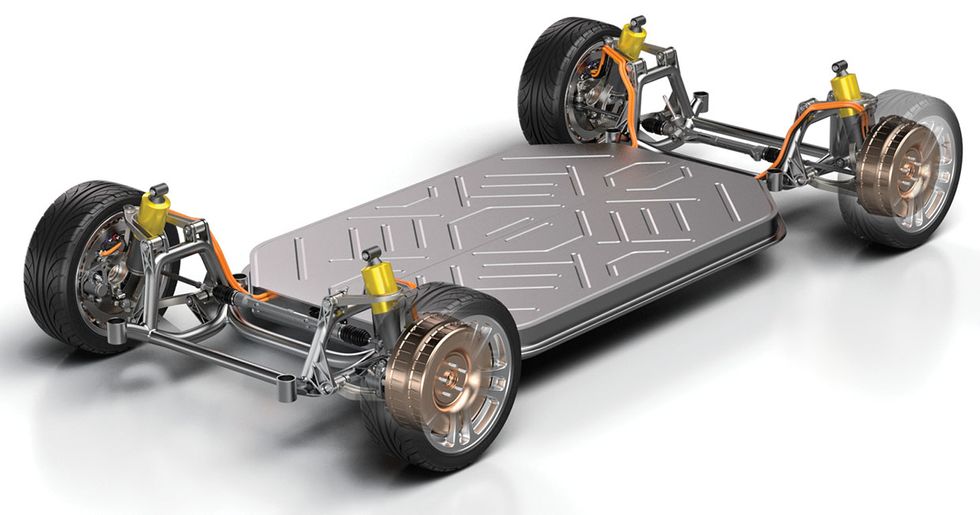
Because the motor requires no transmission or differential or constant-velocity (CV) joints to connect with the wheels, it loses far less energy to friction and thus can use a smaller battery to deliver the same range. That represents a significant savings. It also promises to reduce operating costs, as any car owner who has had to replace a torn CV boot will appreciate.
Space is another advantage. Without a big electric motor under the hood, there’s a lot more room in a car for people and things. Placing the motors on the wheels provides designers with greater freedom to develop new vehicle layouts, something our customers are beginning to realize is a huge value.
Handling, though, is where in-wheel motors really shine. Conventional vehicles implement functions like traction and stability control by slowing down the wheel that is spinning faster than it should. But that approach is rather slow to respond and is limited to applying retarding force. To unlock a skidding tire, it would be preferable to apply some driving torque. With in-wheel motors, you can do that. Indeed, you can deliver precisely controlled braking or motoring torque on a millisecond timescale and thereby greatly improve traction and stability control, reducing stopping distances and enhancing drivability and safety.
In-wheel motors also allow for what’s called torque vectoring—the application of different torques to different wheels—which can improve handling markedly. Honda, for example, has built its Super Handling All Wheel Drive system into certain vehicles. But the mechanics to achieve that goal are generally complicated and expensive. In a car that uses an in-wheel motor system, this ability comes essentially for free, requiring only the right software. The result can be a vehicle than corners as if on rails, one that can feel both nimble in city traffic and stable at high speeds.
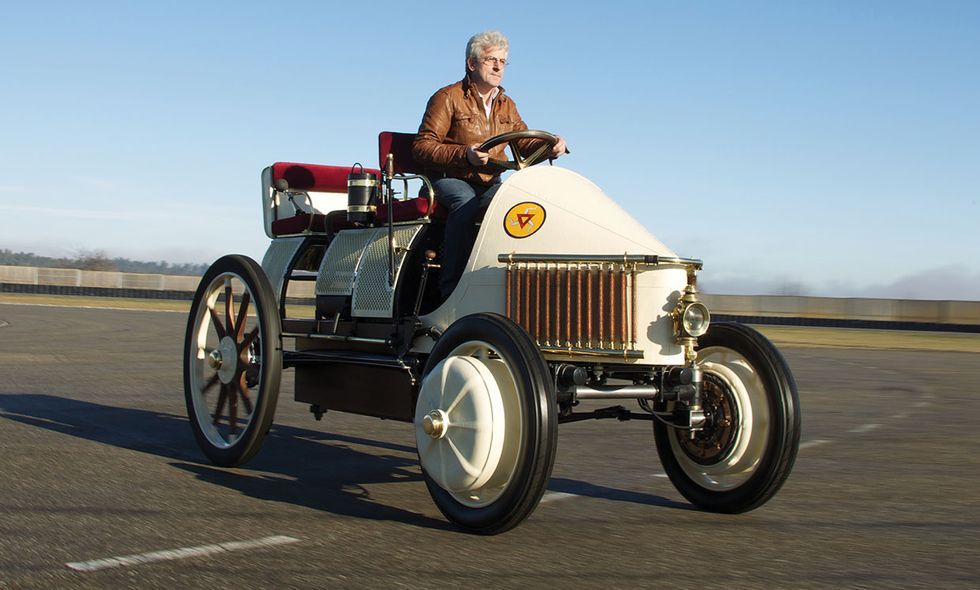
To achieve all this, we’ve had to overcome some tough technical challenges. One was miniaturizing and integrating the inverter: the electronics that convert direct current from the vehicle’s battery into alternating current for the motor. Most inverters for vehicular applications are the size of a large shoebox, but we have packaged ours into less than half that space, so that it can fit neatly behind the electric motor. Packaging things in this way lets us run just two DC cables to each motor, rather than sending AC over as many as six cables, which we would have needed to do had we mounted the inverter elsewhere.
Unlike most of our competitors’ products, our motor is configured with the rotor on the outside. This arrangement places the gap between the stator and the rotor (across which the magnetic forces are developed) at the maximum radius available, thereby creating as much torque as possible within the confines of the wheel rim. This approach lets our motor develop sufficient torque without the need for gearing, which would have lowered efficiency and generated noise.
Of course, creating that torque requires substantial amounts of current, and so the windings and electronics can produce a lot of heat. We had to work out a way to get that heat out of the motor to prevent various components from frying themselves. How much heat are we talking about? Well, a single heating element on an electric stove generates around 3 kilowatts, and our motor produces up to 6 kW. We handle this heat with our liquid cooling system, which includes a radiator mounted centrally in the vehicle.
We designed everything to withstand the various environmental conditions a wheel might experience over the lifetime of the vehicle. And it’s not just shock, vibration, water, and rocks that we have to anticipate: When the driver demands power from the vehicle, the electronics rapidly become hot and then later cool down; this repeated thermal cycling can lead to premature degradation of the components. So we used special rigs to test the electronics and identify weak points. We now have what we feel is a very robust design, one that will last the lifetime of the vehicle, which we define as 300,000 kilometers, 15 years, and 8,000 operating hours—these being the general expectations of this very demanding industry.
There is one challenge that we have yet to overcome, though: the fixed mind-set of some automakers. Many of them have decided that in-wheel motors aren’t practical, and it’s been hard to convince them otherwise. That’s why we’re so excited about our projects with newly established automakers, both in China and the West, which are more open-minded.
Although we’ve been slower to make inroads with traditional automakers in Europe and North America, we are beginning to gain traction there. We now see strong demand in applications for which in-wheel motors can provide obvious competitive advantages, such as low-floor cargo vehicles and electric all-wheel-drive cars and trucks. Designers of tomorrow’s autonomous vehicles are also very interested in the freedom that in-wheel motors can provide.
While we can’t be too specific here, we expect our customers and strategic partners will be making some exciting announcements later this year. So we’re confident that Protean is poised to finally realize the potential that some of the earliest automotive pioneers envisioned when they built electric motors into their horseless-carriage wheels more than a century ago.
This article appears in the July 2018 print issue as “In-Wheel Motors Roll Again.”
About the Author
Andrew Whitehead and Chris Hilton are with Protean Electric. Whitehead is the company’s chief commercial officer, and Hilton is the chief technology officer.
